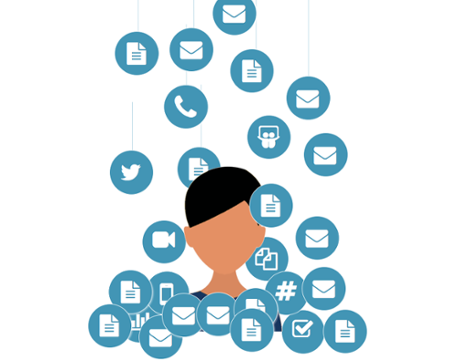 Robert Rose, Chief Content Advisor at the Content Marketing Institute recently wrote a great article in his newsletter about the content treadmill that can lead to fatigue and burn-out among content marketers.
Robert Rose, Chief Content Advisor at the Content Marketing Institute recently wrote a great article in his newsletter about the content treadmill that can lead to fatigue and burn-out among content marketers.
This got us thinking about the buyers that are potentially receiving all that content.
With the new onslaught of “personalized” emails buyers receive from Sales Development Reps (SDRs) using SDR automation platforms added to content marketing efforts, the effect on the email inboxes of our Buyers can be truly overwhelming. A casual survey of our colleagues suggest many people do a wholesale delete of these messages or, even better, shunt them into a spam folder, never to be seen at all.
What’s a marketer to do under these circumstances? Use this 5-step process to minimize buyer fatigue through smart planning:
- Evaluate your organization’s goals
- Make sure your goals focus at all stages of the funnel and not just the top.
- Smart marketers know that over-emphasizing top-of-the-funnel (TOFU) lead generation easily becomes the “spray and pray” campaigns that lead to list fatigue and poorly qualified leads for sales.
- Instead of falling into a TOFU trap, work with Sales and Marketing leadership to develop goals and strategies for each stage of the funnel based on your company’s business plan. Align your goals to reflect who your company is planning to sell to for the first time, as a renewal, an expansion or a cross-sell of products.
- With clear goals, build your content development and campaign plans across the funnel and your target audiences for various sales initiatives. For new prospects, identify the goals for top of funnel lead generation, middle of funnel nurturing and bottom of funnel sales enablement and support. For retention, expansion and cross-sell, build customer marketing plans that align with your account manager’s plans.
- Microsegment your way to relevance
- Do you fear the delete key? The best way to provoke deleting content without reading is to send your buyers emails that are irrelevant to them. From the subject line, to the body copy, to the CTA, your email should reflect that you understand the buyer’s pain points, interests and language. The best results will come from taking a truly targeted approach.
- As a first step, deep dive into your customer data in order to identify micro-segments. Depending on what your company sells, consider factors such of industry, company size, department or function, title, role and seniority in order to identify segments. Pull a list of the contacts you have in current customers in that segment. Then, analyze your marketing pipeline of prospects for existing contacts in companies representing those segments at each funnel stage. Depending on your goals, you may need to use an external data source to augment your list of contacts.
- Research your buyer’s interests
- Before you jump into running campaigns, take the time to research the buyer’s pain points, needs and interests that align to your solution in each segment. Start by researching relevant professional and trade publications to understand the terminology, topics and trends that will catch their eye and increase your credibility in conversations, as well as develop hypotheses for why this buyer needs your solutions. Next, interview 3-5 customers in each microsegment to learn their about their business challenges and goals, and what they look for from a vendor to support their buyer’s journey.
- Construct a consumable cadence by stage from Sales and Marketing
- Now, start planning the cadence of content that will resonate with buyers at each stage in the funnel. Do this in collaboration with your Sales team to make sure that marketing delivery is in alignment with the emails and phone calls in their contact strategy. Build a complimentary cadence of content and time delivery so the campaigns they receive from Marketing are coordinated with Sales and do not overwhelm the buyer.
- Take an Account-based Marketing and Sales approach
- In addition to the steps above, seriously consider recommending your company invest in an account-based approach going forward. The same steps apply except:
- Your microsegment is one company that your company is targeting to sell to.
- Your “buyer” expands to include all the buyers that typically are involved in the buying committee.
- Your marketing programs may extend to advertising to specific accounts on a first time or retargeted basis. In this case, ensure your messaging in ads is aligned with your other Marketing content.
- In addition to the steps above, seriously consider recommending your company invest in an account-based approach going forward. The same steps apply except:
Learn more about successful Account-Based Marketing in our eBook.

